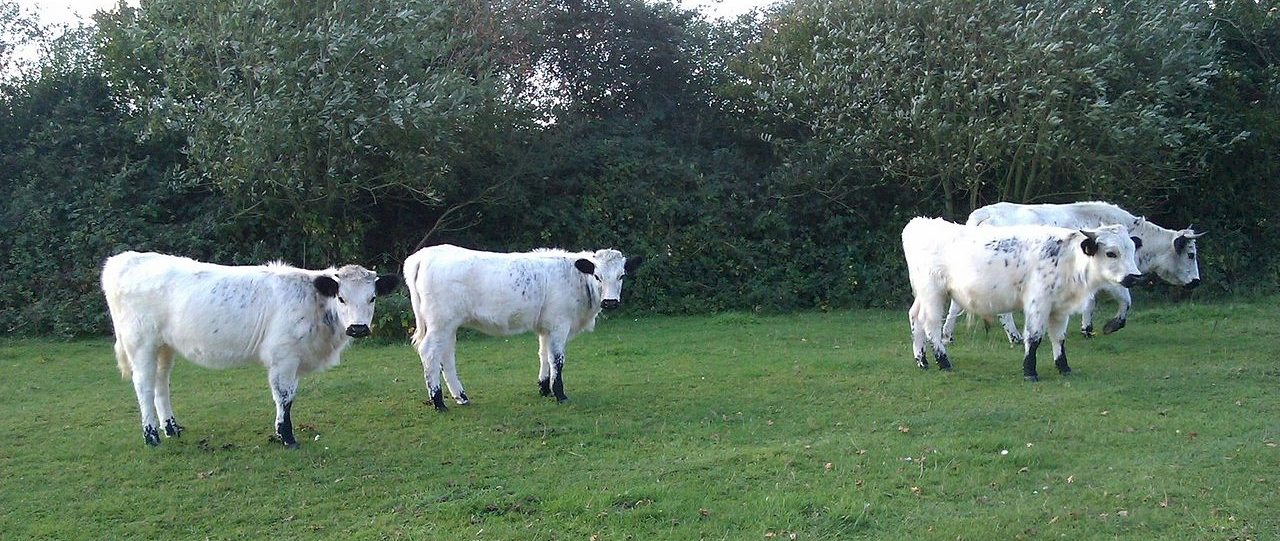The Vaynol (Welsh: Faenol) is one of the United Kingdom's rarest breeds of cattle with less than 150 breeding animals registered. The breed is currently listed as “critical” on the Rare Breed Survival Trust list. There are currently three officially registered herds of Vaynol cattle existing in the United Kingdom. Together with the Chillingham and White Park cattle, the Vaynol is one of three horned breeds derived from ancient white parkland herds from Britain and Ireland. These park cattle were also the basis of a similar fourth breed, the polled British White.
This endangered breed is very similar to White Park cattle. Vaynol cattle are angular in appearance with curved hocks and a sloping rump. They can be white with black points or sometimes completely black. The black is found on the ears, eyelids, hooves, nose, on the point of the horns and they sometimes have black socks. The females can have black teats on their udders. They have long horns, curving outwards and upwards. Bulls weigh from 400–450 kg (880–990 lb) and cows weigh from 300–350 kg (660–770 lb).
Vaynol Cattle, once considered wild, are now considered semi-feral due to their endangered status and increased human contact. Despite their small size and weight, they have a low nutritional requirement and are classified as upland beef. Their hardiness and thriftiness make them well-suited for conservation grazing and their small to medium size and slow growth helps protect sensitive swards and soft soils. However, they may require supplementary feeding to fully mature within the typical 30-month period. The herd has been relocated from Vaynol Park and is now being cared for elsewhere.
Vaynol cattle originate from a herd in Wales. The history of the breed dates back over a hundred years, beginning with a semi-wild herd, originally established in 1872 in Vaynol Park, North Wales. They were kept at the Vaynol estate until the death of its owner, Sir Michael Duff, in 1980. When the estate was sold, the herd was moved to multiple locations in England. This breed has a small number of founders and, in 1989, there was only one existing herd. Four years later, the herd was purchased by the Rare Breeds Survival Trust (RBST) and relocated several times in search of a permanent home. The original herd now resides at Temple Newsam Home Farm in West Yorkshire, run by Leeds City Council.
Temple Newsam Home Farm is open to the public and features a 1694 barn, making it the largest working rare breeds farm in Europe and the only one approved by the RBST. The Trust is responsible for the herdbook and owns most of the breeding animals. The Vaynol cattle primarily reside in large green meadows surrounded by barriers in large estates and national parks.
In 2009, the Vaynol cattle at Temple Newsam were separated into two herds for the first time, with three cows brought to Lincolnshire. In 2012, with the support of The Prince of Wales's Charitable Foundation, a third herd of this breed was formed. RBST members Derek and Cindy Steen in Scotland now care for the heifer called Templeson Ursula and her sister Una.
Source: Content and Photo from Wikipedia.

